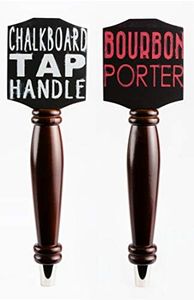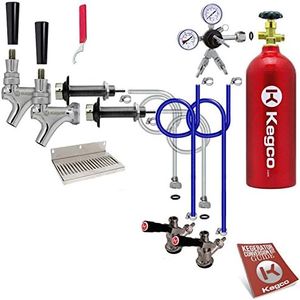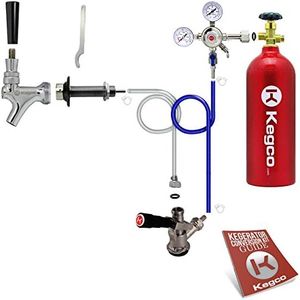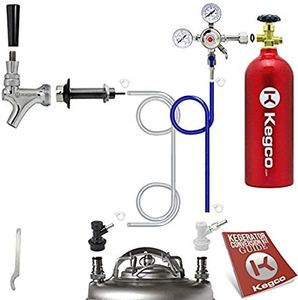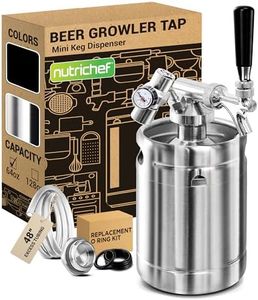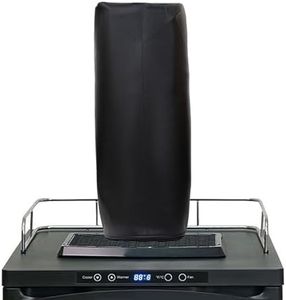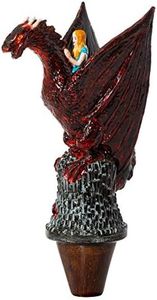We Use CookiesWe use cookies to enhance the security, performance,
functionality and for analytical and promotional activities. By continuing to browse this site you
are agreeing to our privacy policy
10 Best kegerators
From leading brands and best sellers available on the web.By clicking on a link to a third party's website, log data is shared with that third party.
Buying Guide for the Best kegerators
Choosing a kegerator—the appliance that keeps and smartly dispenses your kegged beer, cider, or soda—is all about balancing space, drink volume, and features that fit your flow. Start by thinking about how much you'll serve: is it occasional parties, regular home enjoyment, or a small commercial setup? Think about where you'll put it, as space and style also matter. Understanding a few key specs will help you sort through the many options and find one that matches your drinking and entertaining habits.Keg CapacityKeg capacity tells you how many and what sizes of kegs a kegerator can hold. This is important because it affects how much drink you can serve at one time, and what types of beverages you can offer. Typically, capacities range from holding a single mini or 'sixth barrel' keg, up to dual or even triple full-size kegs. If you're an occasional host or just want fresh beer on tap at home, a single keg option might be best. But for regular gatherings or variety—multiple taps and larger keg sizes are better.
Tap FaucetsThe number of tap faucets determines how many different drinks you can serve at once. Single-tap kegerators are simpler and great if you stick to one style of beer or drink. Dual or triple taps let you serve multiple types but require more space and maintenance. Pick a tap number based on how much variety you want on offer versus keeping things simple.
Temperature Control RangeTemperature control is about keeping your drinks at the perfect serving temperature, typically ranging from cold (around 34°F) for light beers up to 50°F for certain ales or craft beverages. Some kegerators offer digital displays and more precise control, while others use manual dials. For most people, reliable mid-range control is enough, but if you’re picky about drink styles, look for broader and more precise ranges.
Size and FootprintSize and footprint cover the overall dimensions of the kegerator, which determines where you can place it—under a counter, in a corner, or as a freestanding appliance. Compact models work for tight indoor spaces or apartments, while full-sized units need more room, often in basements, garages, or home bars. Think about the available space before choosing, and measure carefully.
Conversion Kit CapabilitiesSome kegerators can be converted into regular fridges (and vice versa) with included or optional kits. This is useful if you want to switch between kegs and general cold storage for beverages or snacks. If you value flexibility, check if the model allows easy swapping—otherwise, stick with a dedicated kegerator for simplicity.
CO2 Tank Size and PlacementKegerators use CO2 tanks to dispense drinks. The tank size affects how long you can pour before needing a refill, while placement (inside or outside the unit) affects ease of use and how much internal space you have for kegs. Internal tanks are neater but reduce keg space; external tanks are easier to access and maximize keg volume.
MobilityMobility refers to whether the kegerator has casters or wheels for easy movement. This is helpful if you want to move your unit from indoors to outdoors, or around your home for parties. If your kegerator will mostly stay put, this may not matter—but if flexibility or cleaning is important, consider a unit with sturdy wheels.
